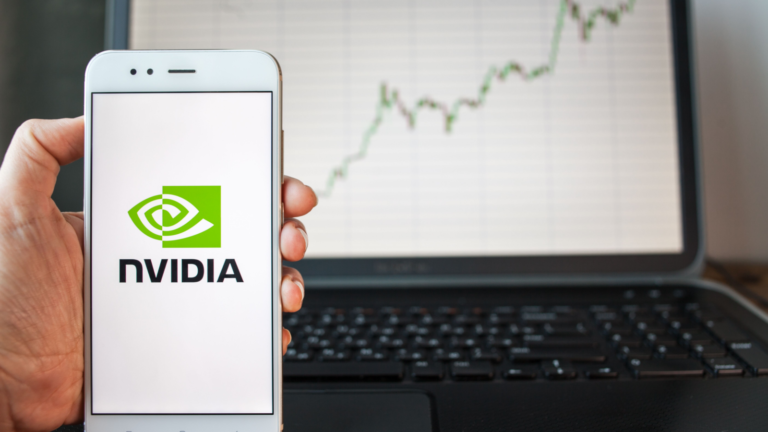Editor’s Note: Eric Fry, here. My InvestorPlace colleague Louis Navellier’s advanced market quantitative system has led him to massive success in his over 40-plus year investing career.
Now, his system is pointing to a massive and surprising new mania that’s sure to make certain stocks pop and others fall. He’ll explain it all in his special event, Prediction 2024, next Tuesday, June 25, at 8 p.m. Eastern. You can sign up here to reserve your spot.
Take it away, Louis…
Hello, Reader.
If you had asked me what the most important date for NVIDIA Corporation (NVDA) in June would be, my answer would have been Monday, June 10. This was the day NVIDIA stock would start trading at its new split-adjusted price following its 10-for-1 stock split on June 7.
However, my new answer is Tuesday, June 18, the day NVIDIA’s market cap hit $3.35 trillion – sailing past Microsoft Corporation’s (MSFT) $3.317 trillion market cap and briefly making NVIDIA the largest publicly traded company in the world.
But we haven’t seen anything yet.
I expect NVIDIA to blow through $4 trillion in market cap this year and then rise to a $5 trillion market cap in 2025.
Today, I’ll explain why. I’ll also give you a “crash course” in algorithmic trading. And then, I’ll share a prediction – one that, if it comes true, will change our lives forever.
Let’s get started.
NVIDIA’s Next-Gen AI Chips
The big jump from $4 trillion to $5 trillion should follow the announcement of the successor to NVIDIA’s Blackwell chips.
The fact is NVIDIA spends more than $2 billion to develop its next-generation AI chips – and competing with NVIDIA has become increasingly futile. In fact, all the other AI chips in development are increasingly low-tech chip solutions, not the deep learning, generative AI chips that NVIDIA develops.
The Blackwell chips enable generative AI, which NVIDIA calls the “defining technology of our time.” So, the company expects its Blackwell chips will “power this new industrial revolution,” as it provides AI for all industries.
Interestingly, though, NVIDIA refuses to sit on its laurels. The company aims to launch a new generation AI chip every year until the end of the current decade. As a result, NVIDIA is leading the entire market. In fact, Bloomberg TV recently stated that the Magnificent Seven has now become the “Magnificent One and 499 other stocks” in the S&P 500.
So, I don’t even think the Justice Department and the Federal Trade Commission will be able to derail NVIDIA. These two entities recently struck a deal on how to proceed with antitrust investigations into NVIDIA, Microsoftand Open AI. But The Wall Street Journal even said these investigations “may ultimately come to nothing.”
I should also add that the company still has stunning forecasted earnings and revenue growth. For the current quarter, earnings are forecast to more than double year-over-year to $0.59 per share, compared to $0.25 per share in the same quarter a year ago. Revenue is expected to come in at $26.43 billion.
NVIDIA has also posted positive earnings surprises in each of the past four quarters, as well as increased its outlook in the wake of these earnings beats. So, all the stock needs to do is follow earnings growth and continue to guide higher, and NVDA should soon surpass the $4 trillion market cap and press onward to $5 trillion.
Algorithms Set to Jerk Stocks Around
As for those other 499 stocks in the S&P 500… I expect them to be increasingly impacted by mean reversion trading algorithms that Citadel implements after each earnings announcement season winds down.
These algorithms like to hit stocks that are overbought and are typically based on a non-linear neural algorithm that becomes unwound as volatility increases. The former algorithmic traders that I have questioned have reluctantly hinted that these mean reversion algorithms typically last 10 to 12 trading days, but it all depends on how fast volatility increases.
The neural algorithm folks like to brag that they are not burdened by any fixed time cycle and that their neural algorithm “naturally adapts.” I do not mean to burden you with the math geek jargon (which is essentially how they reinforce their fragile egos), but in the end, these mean reversion neural algorithms just hit overbought stocks and covers them as they back and fill and digest their recent gains.
Conversely, these mean reversion neural algorithms can be used to artificially “pump up” oversold stocks. However, as trading volume dries up, these mean reversion neural algorithms typically run for cover. The reality is that algorithms cannot effectively work without trading volume.
Personally, I am a “liner” math guy, since my quantitative and fundamental analysis is done on a trailing 52-week basis. Although we also run quantitative rankings on a 270-day, 120-day, 90-day, 60-day and 30-day basis.
I’ll talk in more detail about how that system works next Tuesday, June 25, at 8 p.m. during my special event, Prediction 2024. I’ll also share what “financial mania” could lead to the rise of a “New America” that’ll be almost unrecognizable to anyone from our generation.
So, be sure to register for my Prediction 2024 event so you don’t miss out on everything I have to say next Tuesday.
Sincerely,
Louis Navellier


